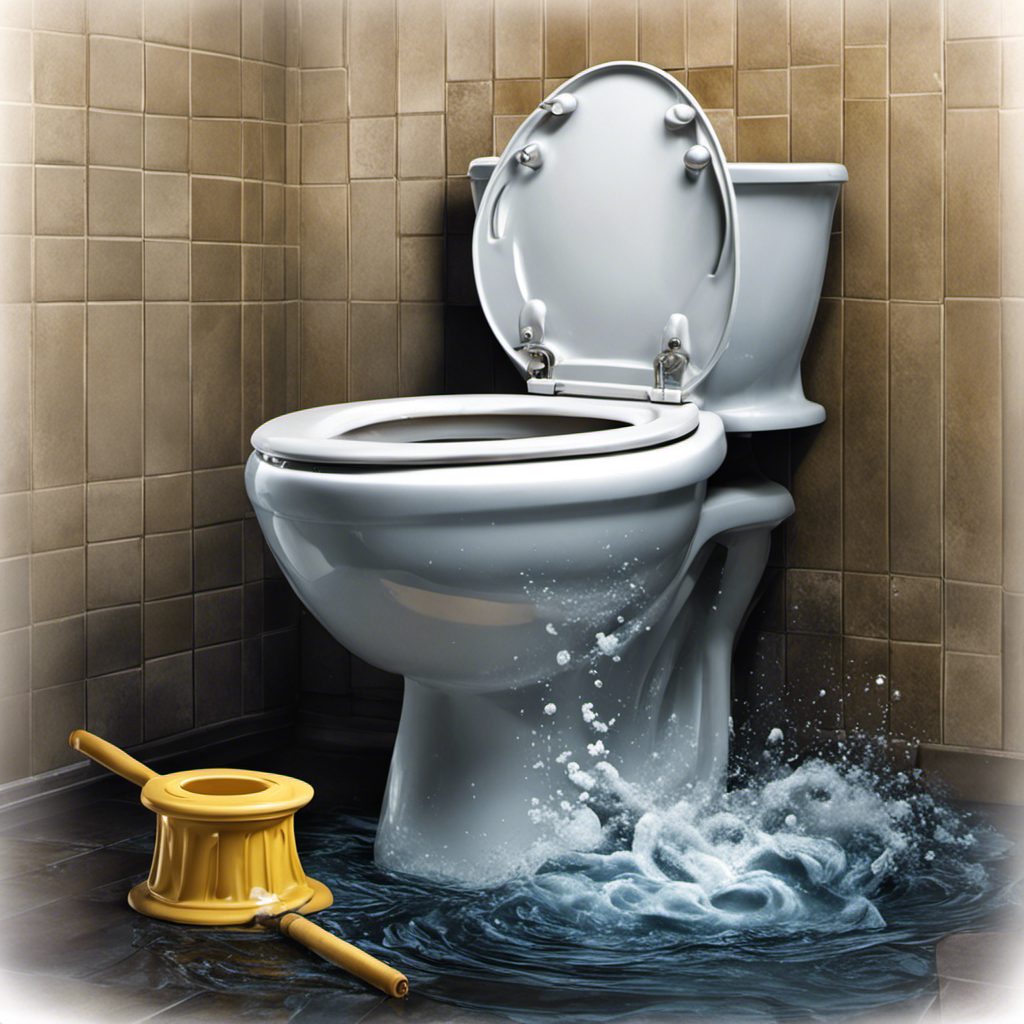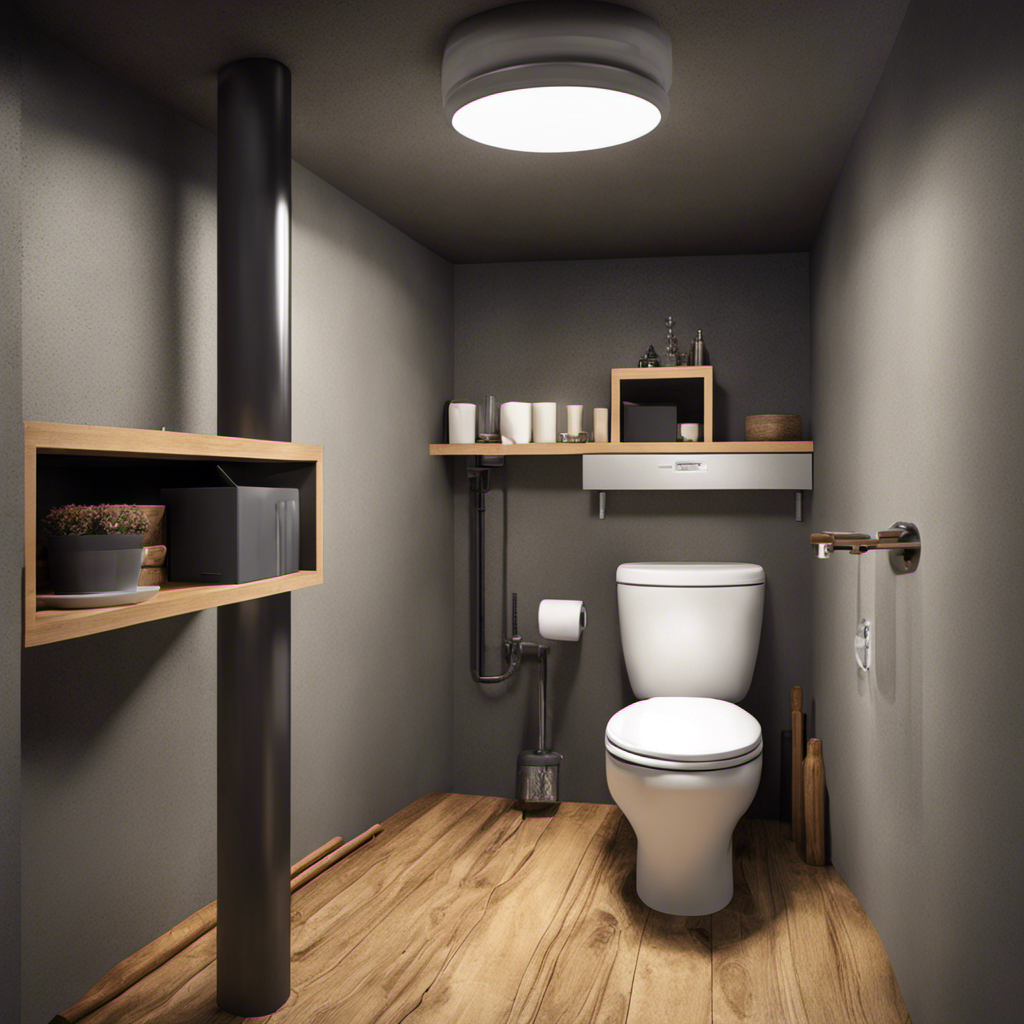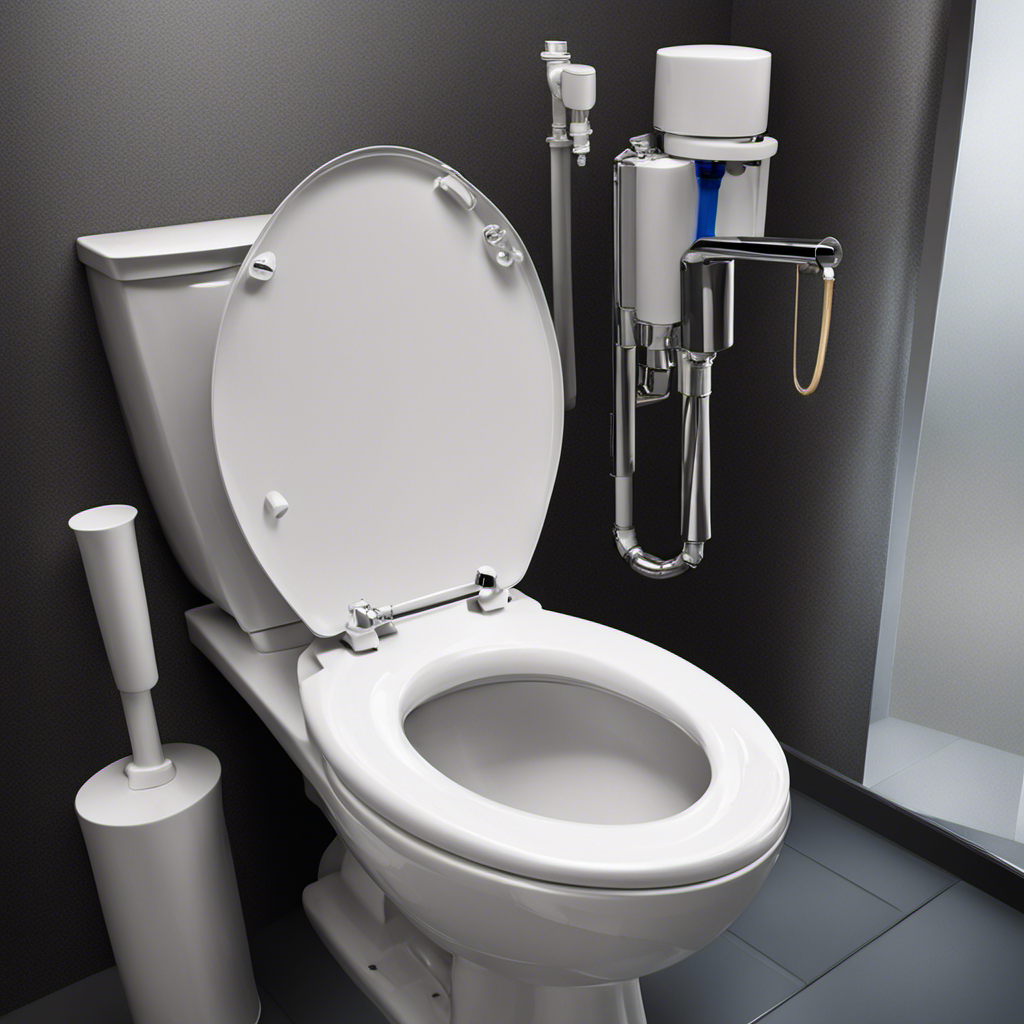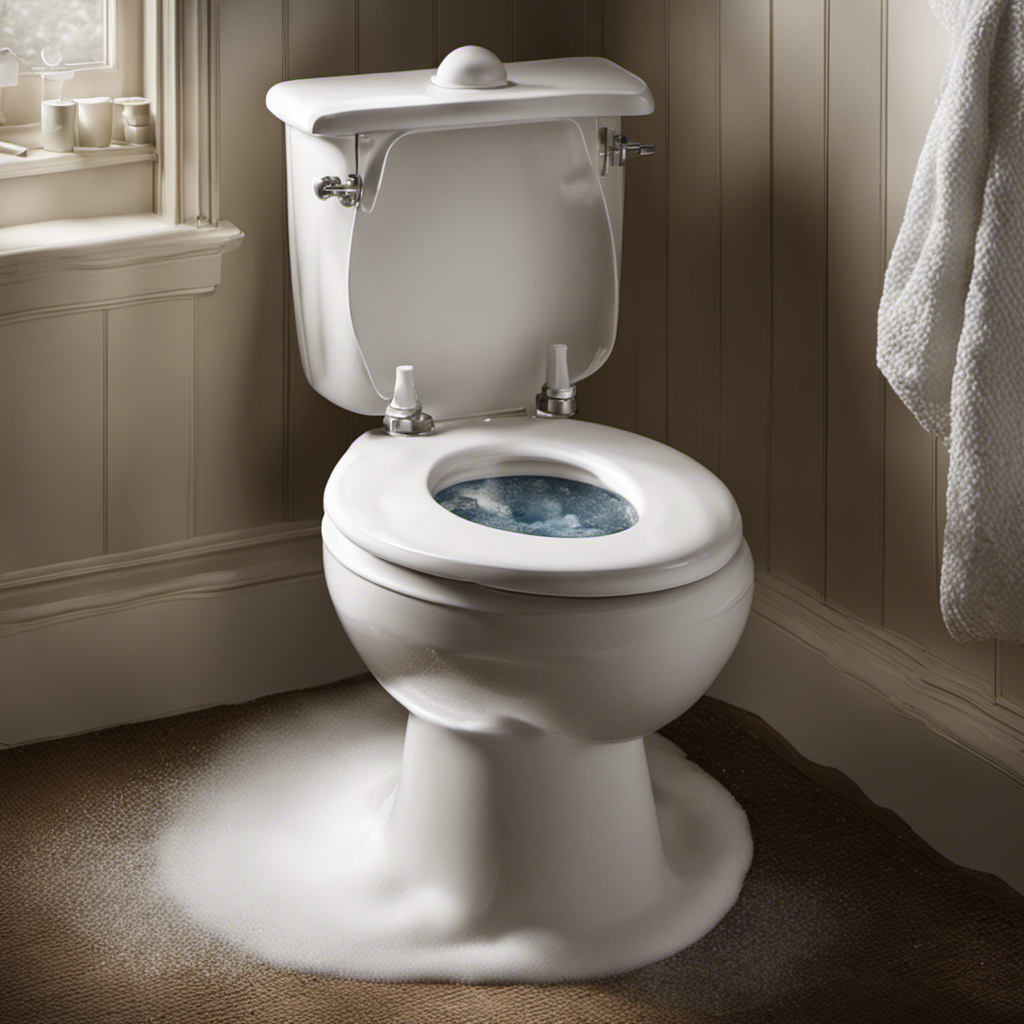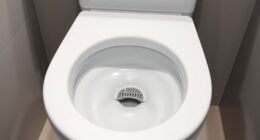As a homeowner, I’ve often wondered how the humble toilet fill valve works. It’s like the conductor of an orchestra, silently ensuring that the right amount of water flows into the tank. This vital component is responsible for maintaining water levels, preventing overflows, and allowing for efficient flushing.
In this article, I’ll delve into the inner workings of a toilet fill valve, exploring its components, the role of the float, and how it controls water flow. Plus, I’ll share troubleshooting tips and maintenance advice to keep your toilet running smoothly.
Key Takeaways
- The toilet fill valve regulates water levels in the toilet tank and prevents overflows.
- The float ball rises with water level, signaling the valve to shut off and helping regulate the water level in the tank.
- The fill valve uses a float and diaphragm to control water flow, with the float lowering to open the diaphragm when water level drops and rising to close it when the tank is filled.
- Adjusting the float height is essential for regulating water flow and troubleshooting common fill valve issues.
Understanding the Basics of a Toilet Fill Valve
To understand the basics of a toilet fill valve, you need to know how it works to regulate the water level in your toilet tank. The toilet fill valve is an essential component of your toilet’s flushing system. Its primary function is to control the flow of water into the tank after each flush, ensuring that the tank is refilled to the appropriate level.
During toilet fill valve installation, it is crucial to ensure that the valve is properly aligned with the overflow tube in the tank. This alignment allows the water to flow into the tank smoothly and prevents any leakage or overflow issues.
Common fill valve problems include water continuously running into the tank, a weak flush, or a noisy valve. These issues can be caused by a faulty valve, a worn-out seal, or an incorrect installation. Regular maintenance and prompt repairs are necessary to keep your toilet fill valve functioning properly and avoid water wastage.
The Components of a Toilet Fill Valve System
Take a look at the various parts that make up a toilet fill valve system. The toilet fill valve is a crucial component for the proper functioning of the toilet. It ensures that the tank refills with water after each flush. Here are the key components of a toilet fill valve system:
-
Float ball: This buoyant ball is attached to a lever and rises with the water level in the tank, signaling the fill valve to shut off when the tank is full.
-
Diaphragm or flapper: This rubber component seals the valve opening to prevent water from flowing into the toilet bowl.
-
Fill tube: This plastic tube directs water from the fill valve into the overflow tube, preventing the tank from overflowing.
-
Adjustment screw: This screw allows you to adjust the water level in the tank, ensuring optimal performance and water conservation.
Understanding these components is essential for toilet fill valve installation and troubleshooting common fill valve problems.
The Role of the Float in a Toilet Fill Valve
When the water level in the tank rises, you’ll notice that the float ball attached to a lever also rises, signaling the fill valve to shut off.
The float is a crucial component of a toilet fill valve system as it helps regulate the water level in the tank.
By adjusting the position of the float, you can control the amount of water that enters the tank. This can be done by bending the metal arm attached to the float or by adjusting the screw on top of the float.
However, with newer technologies, such as floatless fill valves, the need for float adjustment is eliminated. These fill valves use sensors to detect the water level and automatically shut off when the desired level is reached.
This provides a more efficient and reliable method of regulating the water level in a toilet tank.
How the Fill Valve Controls the Water Flow
When it comes to understanding how a toilet fill valve controls the water flow, it’s important to first grasp the valve mechanism.
The fill valve operates by utilizing a float and a diaphragm, which work together to regulate the flow of water into the toilet tank.
As the water level drops, the float lowers, causing the diaphragm to open and allow water to enter.
Once the tank is filled to the desired level, the float rises, closing the diaphragm and stopping the flow of water.
Valve Mechanism Explained
To understand how a toilet fill valve works, you should know that it consists of a float, an arm, and a diaphragm. The valve mechanism working is quite simple yet effective.
When the toilet tank is empty, the float rests on the water, causing the arm to push the diaphragm against the valve seat, sealing it shut. As the tank fills with water, the float rises, lifting the arm and opening the diaphragm, allowing water to flow into the tank.
Troubleshooting tips for a malfunctioning fill valve include checking the float height, ensuring the arm is properly connected, inspecting the diaphragm for cracks or debris, and adjusting the water pressure.
Water Flow Regulation
The water flow in the toilet tank can be regulated by adjusting the float height. This allows for water pressure control and ensures that the tank fills up properly after each flush.
To adjust the float height, locate the fill valve and turn the adjustment screw clockwise to lower the float or counterclockwise to raise it. The float is connected to a valve that opens and closes to control the water flow.
It is important to regularly maintain the fill valve to prevent any issues with water flow regulation. This can be done by checking for any leaks, cleaning the valve, and replacing any worn-out parts.
Proper fill valve maintenance is crucial for a well-functioning toilet and efficient water usage.
Fill Valve Operation
Adjusting the float height on the fill valve is essential for maintaining proper water flow in the toilet tank. The fill valve is responsible for refilling the tank after each flush, ensuring that the water level remains at the appropriate level.
To adjust the float height, follow these steps:
- Locate the fill valve adjustment screw.
- Turn the screw clockwise to lower the float and decrease the water level.
- Turn the screw counterclockwise to raise the float and increase the water level.
- Test the water level by flushing the toilet and observing the fill valve in action.
By adjusting the float height, you can troubleshoot common issues with toilet fill valves such as inconsistent water levels, continuous running, or inadequate refill.
Now, let’s delve into the troubleshooting process and address these issues in more detail.
Troubleshooting Common Issues With Toilet Fill Valves
If you’re experiencing common issues with your toilet fill valve, here are some troubleshooting tips.
First, let’s talk about toilet fill valve leaks. To identify the source of the leak, start by checking the connections between the fill valve and the water supply line. Ensure that they are tight and secure. If the leak persists, it may be necessary to replace the fill valve altogether.
Another common issue is adjusting the water level in the toilet tank. To do this, locate the water level adjustment screw on the fill valve. Turn it clockwise to raise the water level or counterclockwise to lower it. Keep in mind that the water level should be adjusted to just below the overflow tube to avoid overflowing.
With these tips, you should be able to troubleshoot and resolve common issues with your toilet fill valve.
Maintaining and Cleaning Your Toilet Fill Valve
Regular maintenance is crucial for ensuring the proper functioning of your toilet fill valve. By regularly cleaning and maintaining your fill valve, you can prevent clogs, leaks, and other issues that can disrupt the flushing mechanism.
To effectively clean your fill valve, you should use specific cleaning techniques and products designed for this purpose, such as vinegar or specialized toilet cleaners.
Importance of Regular Maintenance
Maintaining your toilet fill valve is crucial to prevent water leaks and ensure proper functionality. Regular maintenance benefits not only extend the lifespan of the fill valve but also help to avoid costly repairs and water wastage. Here are some maintenance tips to keep your toilet fill valve in optimal condition:
-
Check for any leaks or drips: Regularly inspect the fill valve for any signs of leakage. This can help identify issues early on and prevent water damage.
-
Clean the valve: Over time, mineral deposits and debris can accumulate on the fill valve, affecting its performance. Cleaning it periodically with a mild detergent or vinegar solution can improve its efficiency.
-
Adjust the water level: The water level in the tank should be set at the appropriate height to ensure proper flushing. Adjust the fill valve if necessary to achieve the recommended water level.
-
Replace worn-out parts: If you notice any signs of wear or damage, such as a worn-out flapper or a faulty float, replace them promptly to maintain the fill valve’s functionality.
Following these maintenance tips will not only keep your toilet fill valve working smoothly but also save you from potential headaches and expenses down the line.
Cleaning Techniques and Products
Using a mild detergent or vinegar solution can effectively clean the mineral deposits and debris that accumulate on the fill valve over time. Regular cleaning is essential to ensure the proper functioning of the toilet fill valve and prevent any potential issues. When cleaning the fill valve, it is important to follow the manufacturer’s instructions and use the appropriate cleaning products. Here is a table that illustrates some common cleaning techniques and products for toilet fill valve repair:
| Cleaning Technique | Cleaning Product | Instructions |
|---|---|---|
| Vinegar Solution | White vinegar | 1. Mix equal parts of water and vinegar. 2. Soak the fill valve in the solution for 30 minutes. 3. Scrub gently with a soft brush. 4. Rinse thoroughly. |
| Mild Detergent | Dish soap | 1. Dilute the detergent with water. 2. Apply the solution to the fill valve. 3. Scrub gently. 4. Rinse thoroughly. |
| Commercial Cleaner | Toilet cleaner | 1. Follow the instructions provided by the cleaner. 2. Apply the cleaner to the fill valve. 3. Scrub gently. 4. Rinse thoroughly. |
Upgrading to a Modern and Efficient Toilet Fill Valve
If you’re looking to improve your toilet’s efficiency, consider upgrading to a modern and efficient fill valve. A toilet fill valve is an essential component that controls the water flow into the toilet tank.
Upgrading to a new fill valve can provide several benefits, including:
- Improved water efficiency: Modern fill valves are designed to use less water, helping you conserve water and reduce your utility bills.
- Enhanced performance: Upgrading to a new fill valve can improve the flushing power and overall performance of your toilet.
- Reduced maintenance: A new fill valve can help prevent leaks and reduce the need for repairs, saving you time and money.
- Easy installation: Installing a new fill valve is a straightforward process that can be done by most homeowners, without the need for professional assistance.
Conclusion
In conclusion, understanding how a toilet fill valve works is essential for maintaining and troubleshooting your toilet’s water flow. By knowing the components and role of the float, you can easily identify and fix common issues that may arise.
Regular maintenance and cleaning of the fill valve will ensure its efficient operation. And if you’re looking for an upgrade, modern fill valves offer enhanced efficiency and water-saving capabilities.
So, why settle for an outdated system when you can improve your toilet’s performance?

